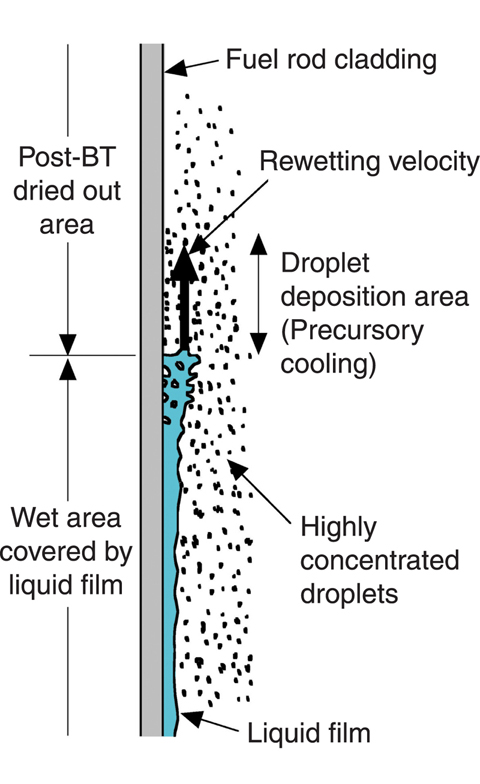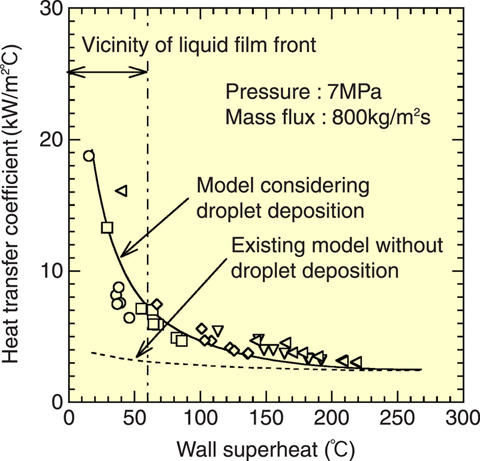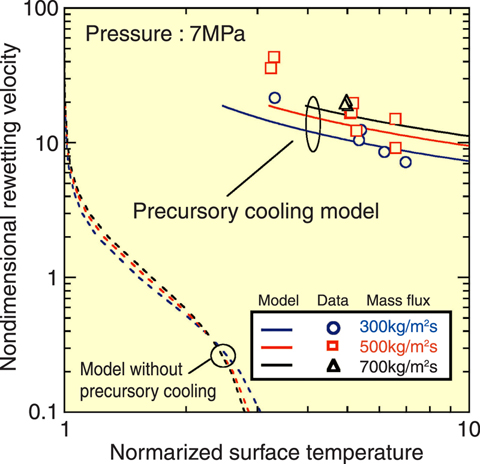
Fig.5-8 Rewetting influenced by droplet flow

Fig.5-9 Comparison of measured and calculated HTC

Fig.5-10 Comparison of measured and calculated rewetting velocities
In the Boiling Water Reactor, the fuel rod surface is covered with continuous liquid film for heat transfer. Depletion of the liquid film causes heat buildup. Such a deteriorated heat transfer is called boiling transition (BT), and these reactors have been required to have a design which does not allow this to occur even during Anticipated Operational Occurrences (AOOs). Results of recent studies, however, indicate that even if BT takes place, the rise in fuel cladding temperature could be small that it does not become any threat to fuel integrity, as long as the BT event terminates within a short period of time. Based on this new knowledge, the Atomic Energy Society of Japan (AESJ) proposed a new standard, the so-called post-BT standard, which allowed occurrence of BT if the dryout duration and peak cladding temperature (PCT) were kept within certain limits. We are conducting various experiments and analysis to confirm the technological appropriateness of the employed models to evaluate the dryout duration and the PCT in the post-BT standard.
The rewetting process shown in Fig.5-8 is important in the post-BT period, and it is difficult to predict. The rewetting velocity, defined as the propagation velocity of the liquid film front along the dried-out surface, is one of the key factors to determine the termination of the post-BT state. There is however little experimental data for AOO conditions. We performed experiments over a broad range of power, water flow rate and temperature of dried-out cladding, including the ranges allowed in the post-BT standard, using a round pipe test section that simulates the fuel cladding. Prediction models for the heat transfer coefficient (HTC) and the rewetting velocity were developed based on the obtained data.
From these experiments, it was found that large cooling water flow enhances generation of droplets that cool the dried-out surface just ahead of the rewetting front where they come into direct contact as shown in Fig.5-8, thus improving heat transfer. Fig.5-9 shows the comparison of the developed and existing models with data of the HTC. The predictions for the low wall superheat range were significantly improved.
The effective heat transfer by the droplet deposition causes great increase in the rewetting velocity. This effect of direct contact of droplets on the HTC has been called "precursory cooling" in the previous studies. We integrated this effect into our prediction model. The comparison shown in Fig.5-10 indicates that the present model considering the precursory cooling effect reproduces the experimental data well. It is concluded that the precursory cooling plays a predominant role in the liquid film propagation during rewetting phase in an AOO situation when there is highly concentrated droplet flow.